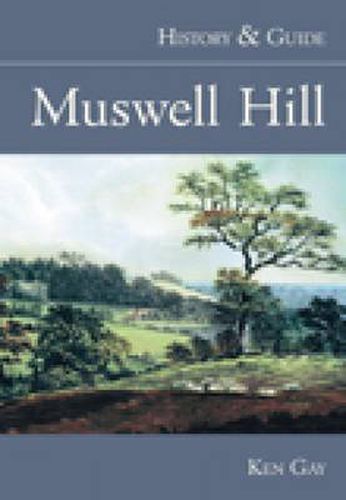Readings Newsletter
Become a Readings Member to make your shopping experience even easier.
Sign in or sign up for free!
You’re not far away from qualifying for FREE standard shipping within Australia
You’ve qualified for FREE standard shipping within Australia
The cart is loading…






The small Middlesex settlement of Muswell Hill, situated some six miles north of London on the Northern Heights, offered fine views from its hilly location and was noted for its profusion of trees. For centuries it provided a rural retreat for the occupiers of its villas and estates. Not urbanized until the very end of the nineteenth century, it was then quickly built up as a middle-class Edwardian suburb with attractive shopping parades, commodius domestic houses set in tree-lined avenues and many churches. In the succeeding century it has remained remarkably untouched and its homogenous architecture makes it a popular place to live. It also benefits from its own ‘green belt’, with the survival of much surrounding ancient woodland and the large expanse of Alexandra Park in which sits the Alexandra Palace building dating from 1875. In this volume local historian Ken Gay uses some 150 views, most previously unpublished, to illuminate his account of Muswell Hill’s unfolding story. In addition a guided tour, which can be used independantly of the main text of the book, introduces routes by which the suburb’s past and present can be explored.
$9.00 standard shipping within Australia
FREE standard shipping within Australia for orders over $100.00
Express & International shipping calculated at checkout
The small Middlesex settlement of Muswell Hill, situated some six miles north of London on the Northern Heights, offered fine views from its hilly location and was noted for its profusion of trees. For centuries it provided a rural retreat for the occupiers of its villas and estates. Not urbanized until the very end of the nineteenth century, it was then quickly built up as a middle-class Edwardian suburb with attractive shopping parades, commodius domestic houses set in tree-lined avenues and many churches. In the succeeding century it has remained remarkably untouched and its homogenous architecture makes it a popular place to live. It also benefits from its own ‘green belt’, with the survival of much surrounding ancient woodland and the large expanse of Alexandra Park in which sits the Alexandra Palace building dating from 1875. In this volume local historian Ken Gay uses some 150 views, most previously unpublished, to illuminate his account of Muswell Hill’s unfolding story. In addition a guided tour, which can be used independantly of the main text of the book, introduces routes by which the suburb’s past and present can be explored.